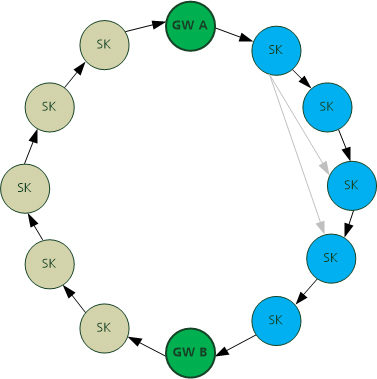Application example for condition monitoring
Fraunhofer IMS has many years of experience in the field of energy-efficient wireless real-time communication with embedded systems, especially in sensor networking for condition monitoring. This includes the use of available hardware components and standardized protocols as well as the development of individual interfaces and proprietary protocol stacks.
One example of such an application-specific system is sensor networking for condition monitoring of overhead power lines. Here, sensor nodes mounted along the line are used to record the current load and the general condition of the line. The measured data is aggregated and visualized at a central location. In the event of a fault messages can be displayed there and measures initiated.
For data transmission from the sensor node to the control center the use of mobile radio technologies from the field of narrowband IoT is the obvious choice. However, in order to be able to connect sensors at remote locations without cellular coverage, it makes sense to first transmit the data via a separate radio network until they arrive at a location with sufficient coverage. Such a radio network should meet at least the following requirements:
- Operation in a license-free ISM band at the allowed transmission power prescribed there
- Transmission ranges at least in the double-digit kilometer range despite low transmission power and low energy supply of each individual sensor node
- High redundancy and reliability
These requirements can be met by using commercial LPWAN technologies such as Sigfox or LoRaWAN.


